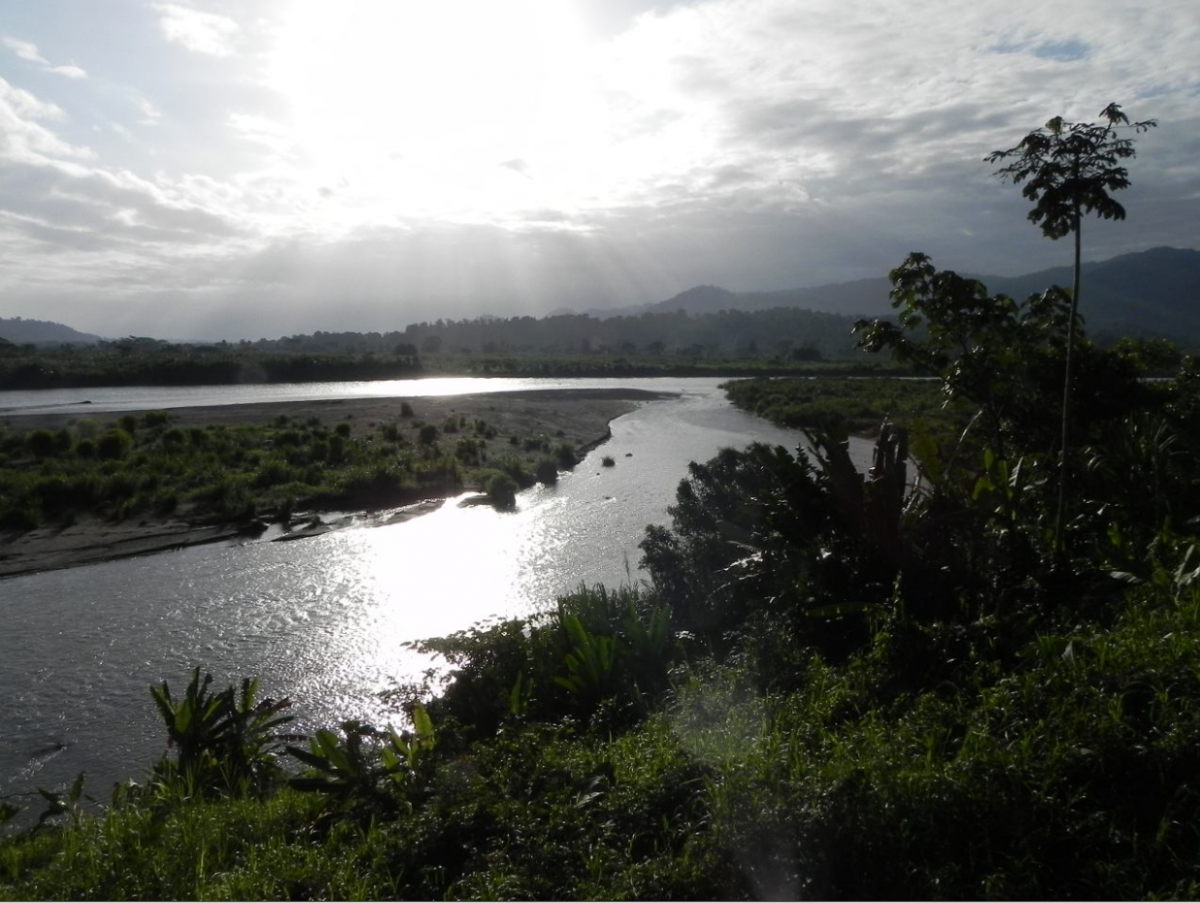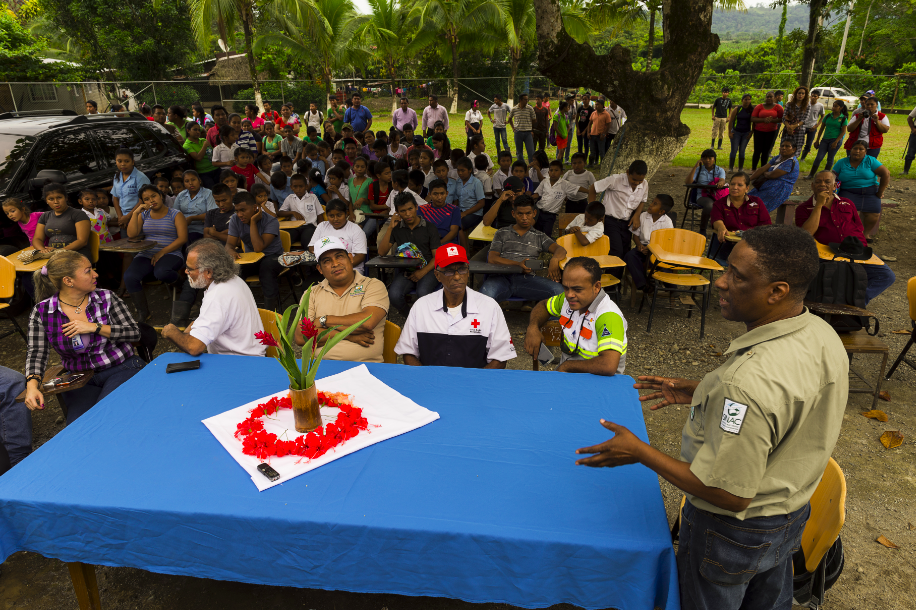Costa Rica and Panama Join Forces to Reforest
Children, youth and adults (primary and secondary students, institutional and municipal authorities, and representatives of communities and local organizations) will meet at previously identified sites in Panama and Costa Rica to plant more than 2500 trees.
August, 2016. In the framework of Project AVE: Adaptation, Vulnerability, and Ecosystems, a day of reforestation will be held simultaneously in the two countries sharing the Sixaola river basin, with the participation of schoolchildren and volunteers from organizations and institutions. Project AVE is funded by the Climate Initiative of the German Federal Ministry of the Environment, Nature Conservation, Building and Nuclear Safety, and implemented by the International Union for the Conservation of Nature (IUCN) in partnership with the Caribbean Talamanca Biological Corridor (CBTC).
Children, youth and adults (primary and secondary students, institutional and municipal authorities, and representatives of communities and local organizations) will meet at previously identified sites in Panama and Costa Rica to plant more than 2500 trees.
The aim is to influence civil society, institutions, municipalities and academia regarding measures for climate change adaptation through biodiversity conservation and protection of ecosystem services, while also raising participants’ awareness about the importance of maintaining vegetative cover in watersheds to address the effects of climate change. The event will be held on Thursday, 25 August 2016 from 8:00 am to 12:00 noon in the community of Margarita and in Tiger Hill on the banks of the Sixaola River.
According to Pedro Cordero, Technical Officer of Project AVE, “Reforesting creates awareness and offers a nature-based solution to community problems in light of climate change, since basins with restored river banks and forest cover help buffer the impact of flooding caused by the force of the water.”
All together some 250 people in the two countries are being invited from the education, health and environment ministries; communities; and local organizations such as development associations, firefighter corps, Red Cross, and others.
Tree species are selected according to a specific function - to protect soil, provide shade or produce food for fauna - and vary depending on the distance between banks and closeness to the sides of rivers and streams. On this occasion the species to be planted are sotacaballo (luehea divaricata), almendro, sangrillo, savana roble (pink trumpet tree) and caobilla or cedro macho.
Before planting begins, in both Costa Rica and Panama a talk will be given on the importance of trees in ecosystems and techniques of caring for them. Later on the trees will be monitored to ascertain how many survived, with follow-up for their maintenance, and will be measured periodically.
The organization of this event will also benefit area families through the services contracted to carry out the activity, and also collaborates in providing state institutions, nongovernmental organizations and communities a meeting ground where they can set up joint actions on behalf of governance, ecosystems, the relation with nature and revamping of local capacities.
More information:
Pedro Cordero, Technical Officer pedro.cordero@iucn.org









